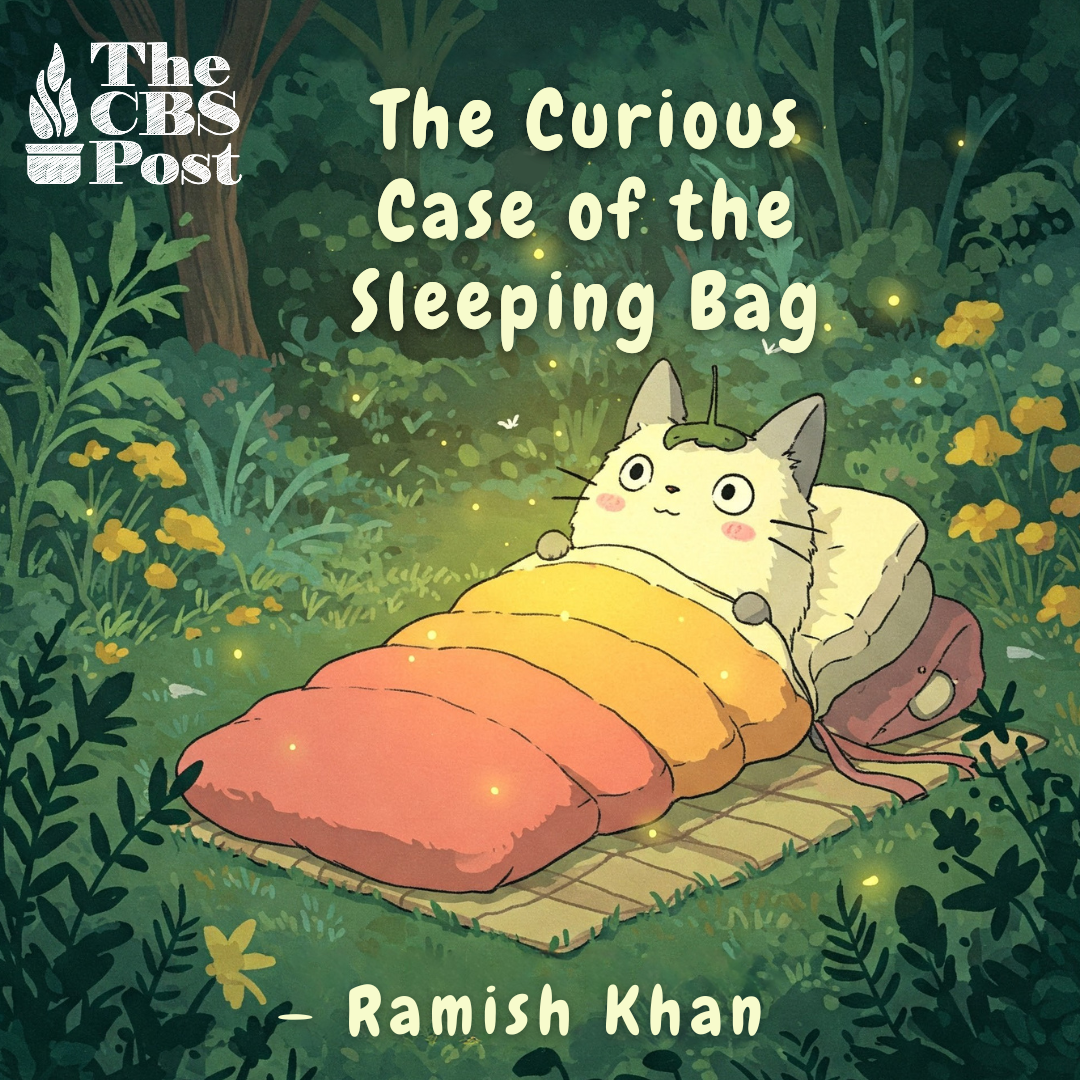The Curious Case of the Sleeping Bag
By Ramish Khan (BFIA’26)
Survival shows have a certain charm. Growing up, I was hooked on watching Bear Grylls venture into the wild, battling the elements with only his wits and a few basic tools. As a kid, I never questioned how the show came to life. I didn’t think about the team behind the cameras, making it all seem like one man’s adventure. What captivated me most was his routine: set up a camp, find means to ignite a fire, and, every night, pull out his sleeping bag to sleep under the stars. To my young mind, it seemed like the pinnacle of cool.
As years passed, my curiosity about camping and survival only grew. Yet, my experience was limited to a sleeping bag gifted to my father by his uncle. I have never ventured into the great outdoors but found myself fascinated by the simple act of sleeping in that bag. It was my first real encounter with the camping world, in my home, albeit one that would only last a week. The bag, after all, didn’t live up to its appeal. It lost its shape and eventually made its way into a charity donation. But that brief infatuation still lingers in my mind.
But this leads me to a question that has stayed with me over the years: Do sleeping bags matter anymore?
In today’s world, we’ve come to rely on a slew of alternatives, many of them more comfortable than the simple sleeping bag I slept in as a kid. On my travels to the mountains, I rarely encountered the famed bag, aside from the occasional trekking companies that would provide them for overnight stays. In my own experience, though, sleeping bags were never as comfortable as I thought they’d be. Maybe it’s the nostalgia from childhood, but the memory of me waking up in a cramped, cold sleeping bag still lingers. Perhaps it’s just me, or maybe we’ve moved on to better options.
But then, one cold Delhi evening, during the city’s infamous cold wave, I witnessed something that made me rethink my stance on sleeping bags. I saw a homeless person huddled in a sleeping bag, their only shield against the gripping cold. In that moment, everything clicked. The sleeping bag, though forgotten in our collective narrative, is a lifeline for some.
It was a necessity, not just for survival but for human dignity.
This encounter sent me on a bit of a research spree. The sleeping bag, despite its absence from our lives, still plays a vital role in the outdoor world. Major brands like pHd Designs, Hispar, Zenbivy, and Marmot continue to lead the charge in sleeping bag innovation. The history of the sleeping bag itself is quite fascinating. It was invented in 1876 and patented by Pryce Pryce-Jones, a mail-order pioneer. But it wasn’t until 1890 that the first commercially produced sleeping bag with insulating filling was created by a Norwegian company called Fuglesangs Sønner A/S.
The sleeping bag, it turns out, was an invention born out of necessity, created for survival. Though it’s largely forgotten in modern camping culture (or at least no longer as glamorous as it once was), it still holds value for those who truly need it. I guess Bear Grylls, despite his fame and adventure, was simply demonstrating a tool, a symbol of survival, just as many before him had done.
Each sleeping bag comes with three critical ratings: comfort, limit, and extreme. These ratings tell you at what temperatures the bag is most effective, making them an important tool for anyone venturing into the wild. Even for those of us who might not be traversing the cold peaks of Everest, these bags still remind us of an essential part of human existence: survival.
But beyond their practical use, sleeping bags provide something deeper. I guess there’s a psychological comfort that comes with cocooning yourself inside a sleeping bag when in an extreme environment. In the wilderness, or even at home, the act of cozying into a bag and zipping it up creates a sense of safety and security. That is what we do during winters, crawling into our beds and blankets. It’s almost like retreating into a safe space, away from the elements, the unknown, and the chaos of the world. This comfort can be surprisingly powerful, offering a psychological barrier that helps you feel protected.
As a child, I remember that feeling when I first crawled into the sleeping bag. Though it didn’t have the warmth or long-lasting comfort I expected, it still gave me a sense of security. I wasn’t in the wilderness, but the simplicity of the bag and the act of sealing myself inside felt like a small, temporary escape from the world outside. That sense of safety, even in something as small as a sleeping bag, might have been the initial draw for me. It wasn’t just about warmth; it was about creating a small, personal sanctuary in an otherwise unfamiliar or uncomfortable space.
In conclusion, perhaps the sleeping bag is not as obsolete as I once thought. It may have lost its allure in our modern, comfort-driven world, but its role in survival — and even in the fight against the extremities — is undeniable.
Maybe, in some small way, the humble sleeping bag does matter more than we realize.




Comments